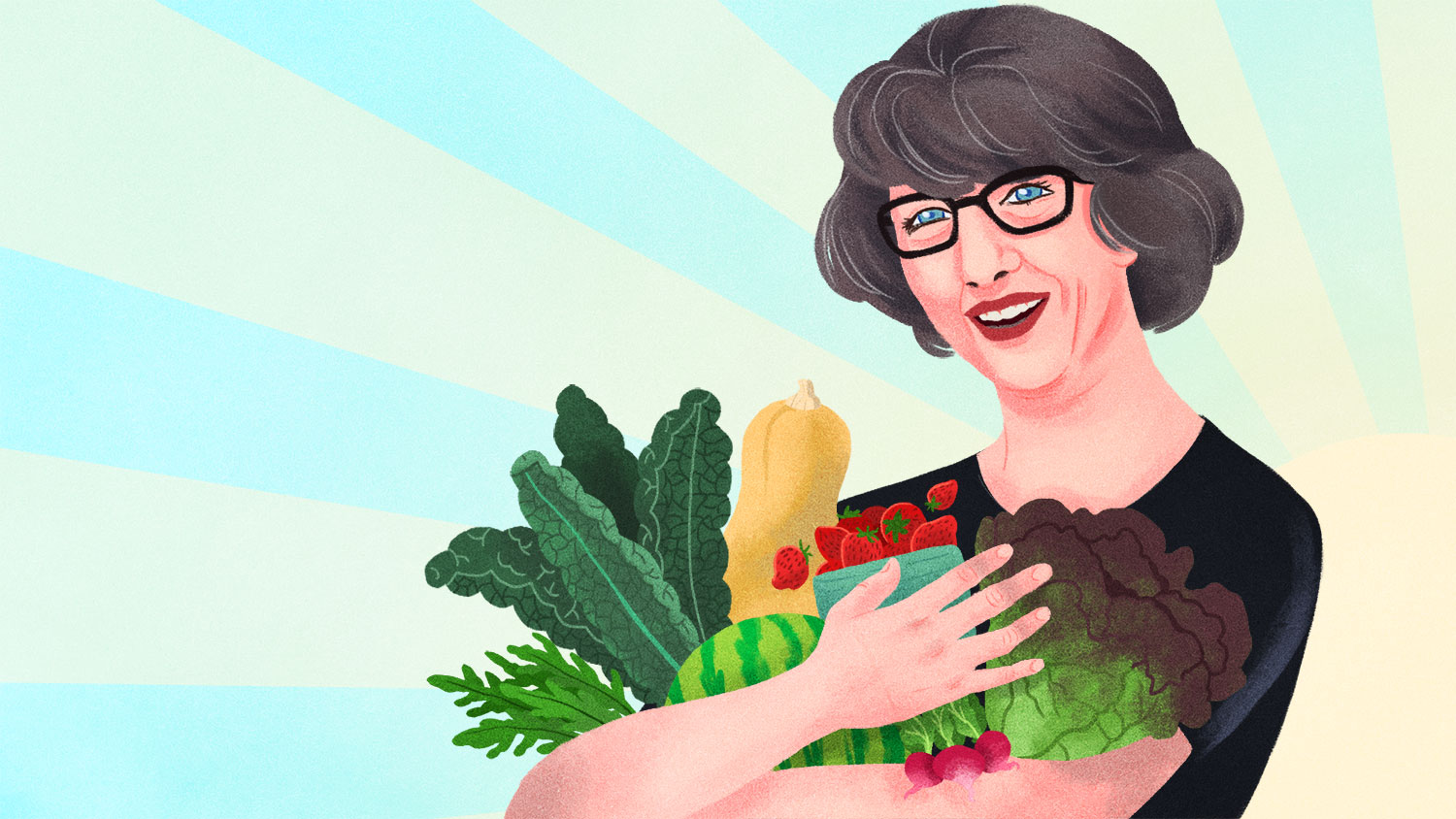Mid-size farms have a unique challenge. They are too big to sell at farmers markets, yet too small to compete in the commodity market. So where can they sell their goods? Louisville, Ky.-based food activist Sarah Fritschner thinks state institutions are right in the sweet spot. Schools and hospitals could handle the higher volume that mid-size farms provide, pay a price that everyone is happy with, and tout a locavore menu. Sounds perfect, right?
Well, it takes more than a farmer knocking on a hospital’s door and offering to sell crates of cage-free eggs to make the farm-to-institution relationship work.
Fritschner is trying to link these worlds as a coordinator for Louisville Farm to Table, a city organization that works to stock state institutions’ kitchens with locally grown foods. She is trying her damnedest to push Kentucky schools and hospitals to look beyond contracts with Big Food distributors such as Aramark, Sodexo, and Sysco.
[grist-related-series]
Large institutions are less willing to switch over and commit to buying locally grown food because of restrictive (and profitable) contracts with their corporate food distributors.
“None of those [distributors] are incentivized to work with a local farmer. The system is set up to keep local farmers out,” says Fritschner, who spent nearly 30 years as a food and agriculture writer for the Washington Post and USA Today, among other publications. “What we want to do is change that system to make room for local farmers.”
Kentucky’s agricultural market was once dominated by tobacco farms. Today, however, the state grows a variety of crops — everything from watermelons and strawberries to radishes and kale. So it’s frustrating and bizarre that the state doesn’t take better advantage of locally grown foods, Fritschner says.
While her successes might not be huge, they are hard-fought. In the last year, Fritschner has helped partner Kentucky farmers with Louisville school districts to get local foods like butternut squash into student meals. Fritschner also reported that from 2012 to 2013, Jefferson County Public Schools spent about $118,000 on locally grown veggies for the 60,000 lunches they serve daily.
At the college level, the University of Louisville recently committed to buying two locally raised, grass-finished steers per week from nearby Marksbury Farms.
College campuses are some of the best places to take up the fight for local food, says Fritschner. Students have the power to demand local food in their cafeterias and can tap faculty for support. Fritschner works with student organizations like the local chapter of Real Food Challenge to shift university budgets away from industrial food distributors and toward local, sustainably produced foods.
Fritschner wants hospitals to start buying local, too.
“I started thinking: ‘What about nursing homes?’ Because, frankly, I’m not that far away [from there],” she says.
Similar to universities, most hospitals have contracts with national food distributors. The problem: The contracts offer a set list of available products, meaning there isn’t a lot of room to bring in local foods.
Thankfully, says Fritschner, there are loopholes.
“What [hospital distribution agencies can] do is find creative ways to purchase local that don’t attract attention from corporate people,” says Fritschner.
If a hospital requests items unavailable through their distributor, they are allowed to buy the product from an outside source. Fritschner says that distribution centers “can order a little bit [off the side] without getting caught.” According to one of her sources, distributors can sometimes spend up to a few hundred thousand dollars on outside sources, in some cases, before they get flagged. This is where she wants to plug in local farmers.
But it is difficult. “[There] are things like beef cheeks [or bison] that Sysco is never going to carry because no one is going to order them. If I can find a chef [who] wants 100 pounds of beef cheeks, then I can get them into the hospital,” Fritschner says. “But then you have to find [a supplier] for that.”
Another challenge for Fritschner is funding. “First of all, I’m paid with grants, so I’m almost always unemployed,” she says. But she feels like now is the time to get state institutions to ride the farm-to-table bandwagon. “I feel like I have to chase the food system while people are still interested in food,” Fritschner says. “I want to get as much done as I can while the wind’s at my back.”
She recalled a Unitarian church convention in Louisville in which church leaders demanded to have local food. The catering company working the conference struggled to accommodate the request and reached out to Fritschner for help. Even though the catering order didn’t go well, it showed that if people demand local foods, institutions will eventually have to listen.
“When you’re changing the food system, it’s quite a big ship to turn,” Fritschner wrote in an email.
Thankfully, Kentucky has Fritschner at the helm.

